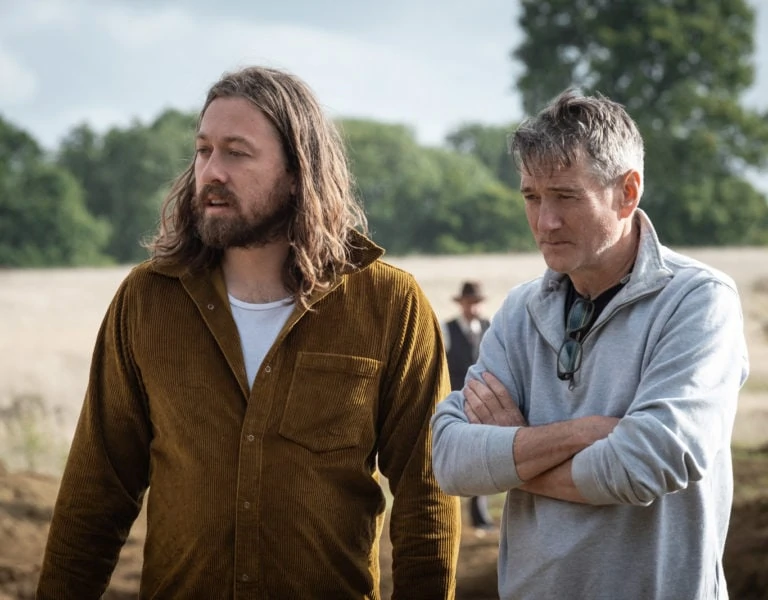WATER-TIGHT CASE
While onboard the nuclear submarine HMS Vigil to investigate a death, DCI Amy Silva (Suranne Jones) learns about a disappearance of a fishing trawler which may be directly related. Matt Gray BSC reveals how the team established the world of the submarine and developed a visual language to draw the audience into the story.
Vigil, the BBC One production created by Tom Edge (Lovesick), reunites director James Strong (Doctor Who) with frequent collaborator Matt Gray BSC (The Living and the Dead) for the first three episodes of the six-part series. Working within the confines of a submarine was not an ideal setting considering the COVID-19 protocols. “We got the majority of the first block of interiors in before the pandemic struck,” says Gray. “Coming back, we had masks, social distancing, reduced the number of people, increased the airflow and opened the set where we could.”
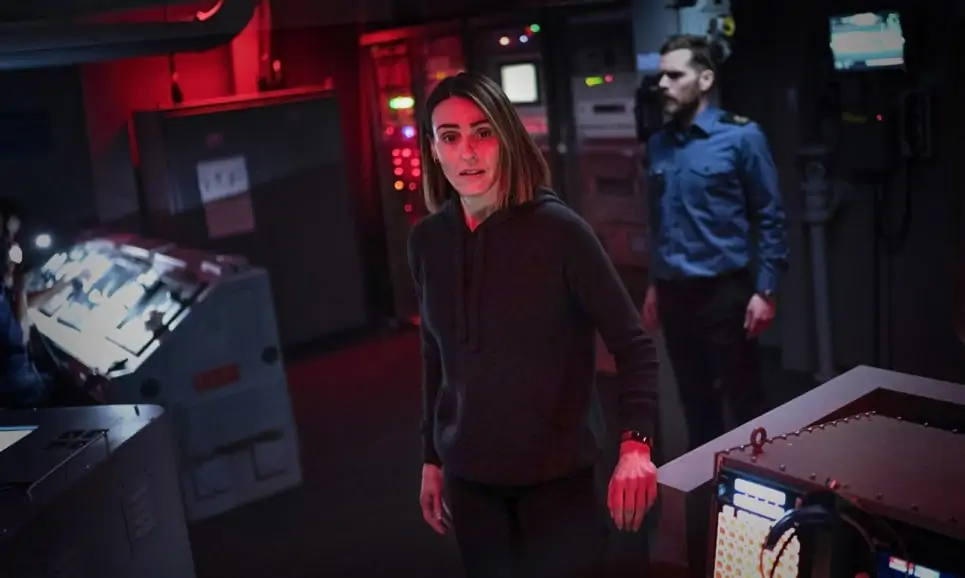
Given the nature of the subject matter, the Royal Navy did not offer much in the way of cooperation. “I don’t think that they were interested in engaging with us,” notes Gray. “Tom Edge worked hard to get the facts of the world right which was important. These things are just short of one and a half football pitches long, eight double decker buses deep, generate their own airflow, and have unlimited power.
“Nuclear submarines are designed to be invisible and only come back when the crew has finished eating the food that has been crammed in there. We also had to piece together the world of the Navy base which was a combination of visual effects and the clever use of locations.”

Principal photography for the three episodes lasted for 12 weeks and took place around Glasgow. “It was all based up in Scotland because the nuclear base is in Faslane,” says Gray. “You need to invite the audience into the world and begin to develop the language which is going to draw them into the story. We looked at The Hunt for Red October and the sci-fi genre where you are in a claustrophobic alien environment. You shouldn’t be that deep underwater. It’s completely artificial. And what it does to your senses and mind. We tried to create a sense of depth. You are on different decks and the way that piece of engineering is created you have your nuclear tubes and reactor, and the human element fits in around those components.”
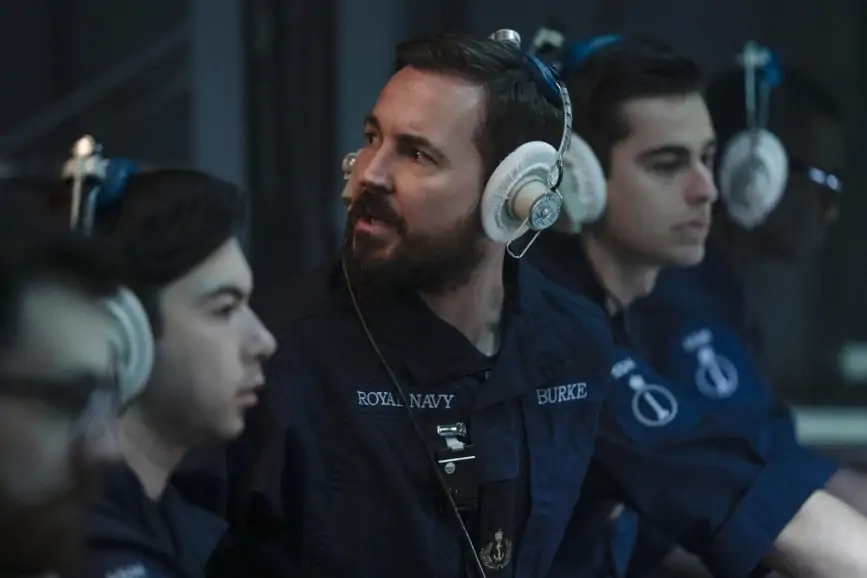
Long camera movements take place on the submarine while it was important to see the horizon for the land scenes. “The flashbacks place DCI Amy Silva in a family environment that is warm and inviting and are somewhere she could escape to in the confines of the submarine,” explains Gray. “We decided to go with that style that is a little more evocative and poetic; it was a good way to go against the industrial nature of being onboard the submarine.”
The land and submarine each had a separate LUT that were not completely different from each other. “We were working with more manmade industrial colours inside of the sub like acidic yellows, greens and reds. There were different states so when the sub was on different levels of power that was denoted by the way the lighting would adjust. When on land, we tried to have natural interpretations of the same colours.”
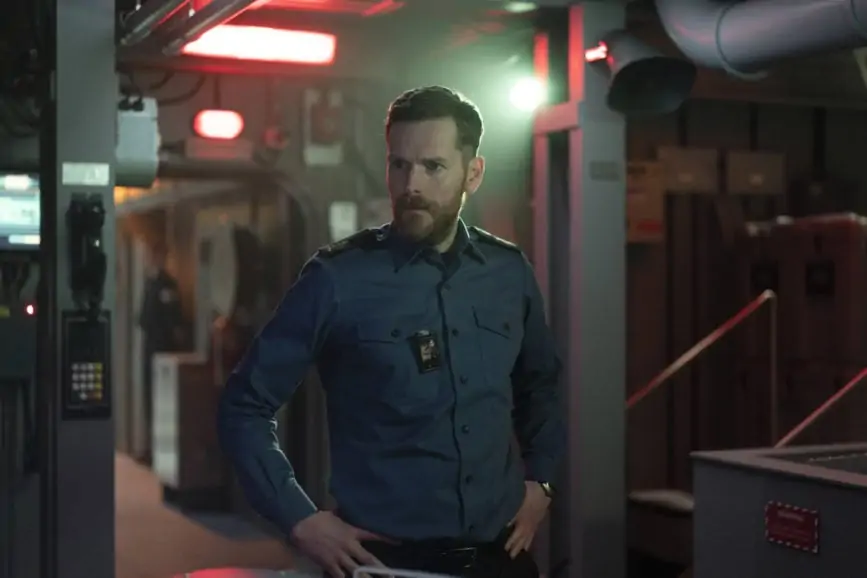
Two ARRI Alexa LF cameras supplied by Progressive Broadcast in Glasgow were utilised throughout the production. “Martin Newstead did a fantastic job with the B camera/Steadicam and Martin Payne was my A camera focus puller,” says Gray. “We shot 4K HDR, delivered as a 2:1 aspect ratio and this was my first experience of using the ACES colour grading system.”
The lenses were a combination of Zeiss Master Anamorphic Primes, Kowa Anamorphic 75mm, and Tokina Vista One Coat – Spherical. “I wanted the camera to be interpretive in that space. We could get more texture across the Tokina lens, and I didn’t want the lighting sources to be too dominant. We also wanted to sometimes open it out and enjoy the scope and range that anamorphic lenses give you. In terms of our emotional distance from the characters, 35mm to 40mm felt about right because we were with them experiencing these events.”
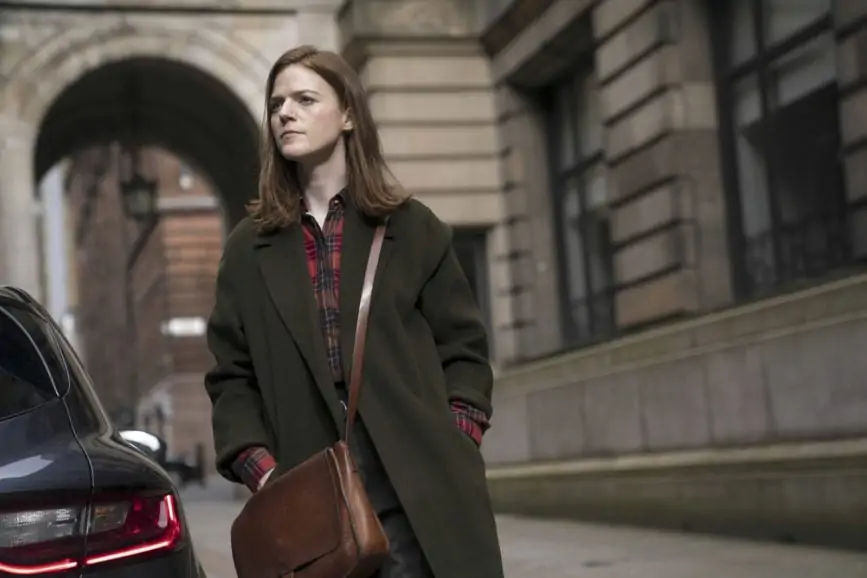
For the interior of the HMS Vigil, LED Astera tubes were linked back to an iPad through WiFi. Gray worked with gaffer Paul Jarvis, best boy Paul Bates and production designer Tom Sayer to fit everything into the set and then they used travelling fill lights. “Being able to micro adjust light and light intensities throughout the sub was fantastic. Colin Brown did a great job of the grade up at Blazing Griffin in Glasgow; he was subtle and responsive to what we created.”
Visual effects were created by Goodbye Kansas Studios for the pivotal moment when Silva is lowered from a helicopter to the submarine out in the middle of the ocean. “We managed to source an original helicopter that had been looked after and maintained. We shot some scenes on the ground with green screen and wind effects. We also shot some sequences in the air. A partial build was constructed for when she comes down into the conning tower. It’s like any of these slightly larger projects – you piece it together slice by slice.”
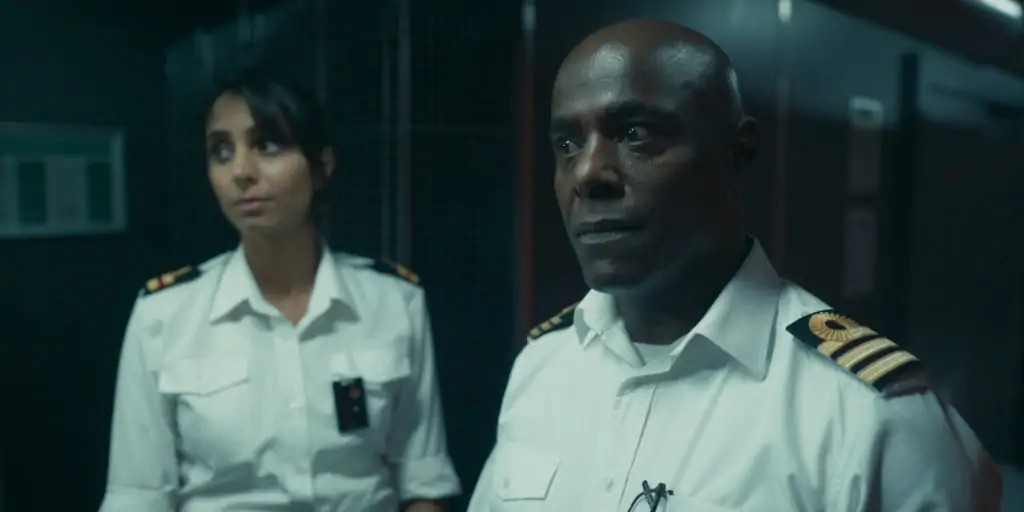

Looking after the final three episodes were director Isabelle Sieb (Shetland) and Ruairí O’Brien ISC (Line of Duty). “Isabelle and Ruairí were prepping the second block while we were shooting,” says Gray. “I spent a couple of good evenings with Ruairí talking through the ideas that James and I had put in place. He took it on and began to tell his own story. They did a great job.
“The biggest challenge was establishing the world of the submarine because it’s outside the realm of most people’s experiences, including myself. You want it to be realistic, but it has to serve dramatic purpose as well. For example, there is a moment where something happens, and the lighting is interacting in quite a kinetic way. My interpretation was that the sub as an entity was telling people there is something wrong and wasn’t going to let up until it had been sorted out. Then there were other times where lighting states were determined by the humans onboard. It was fun playing with those. You got to describe the world and then use it as a dramatic entity as well.”



